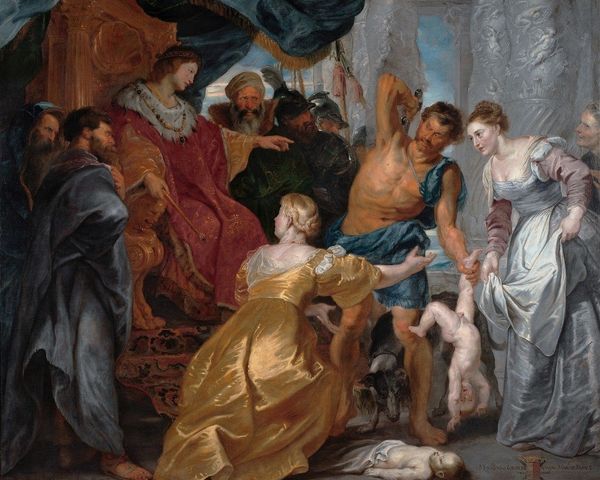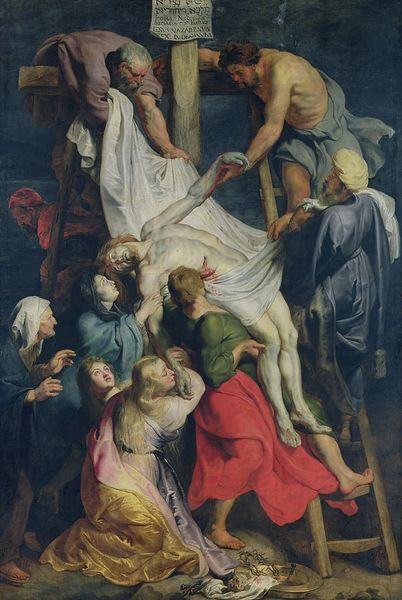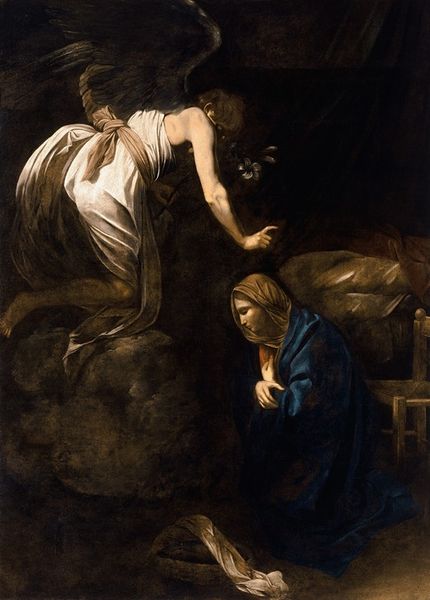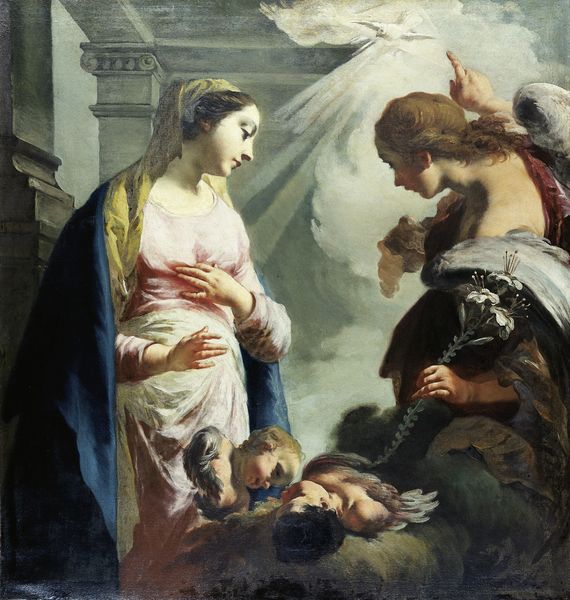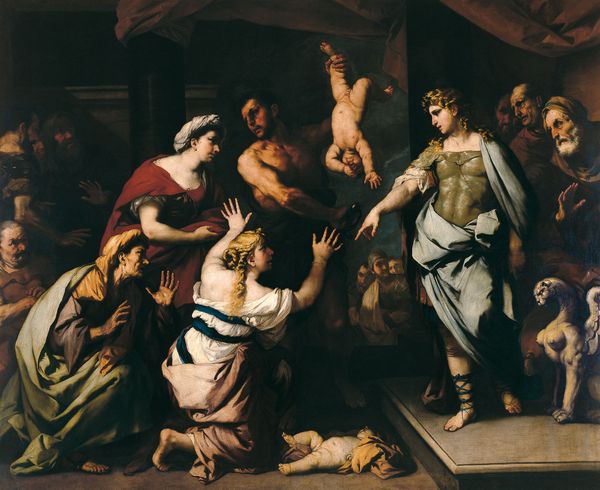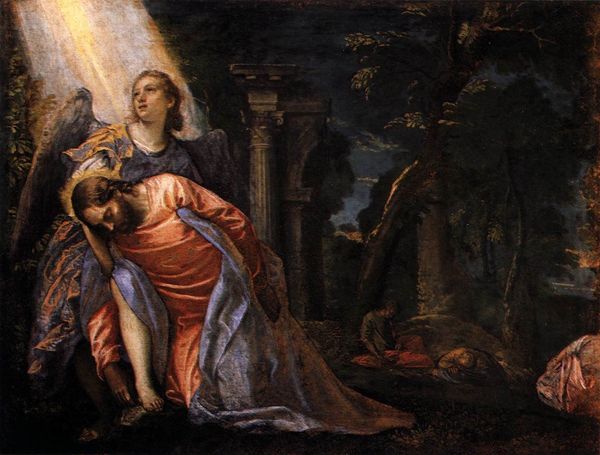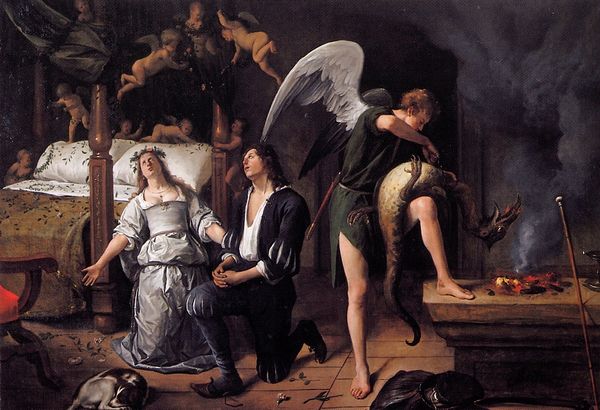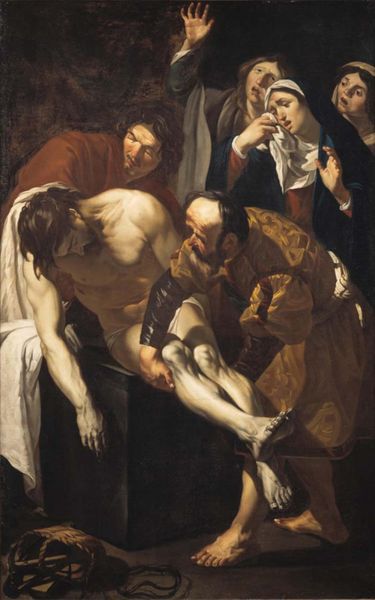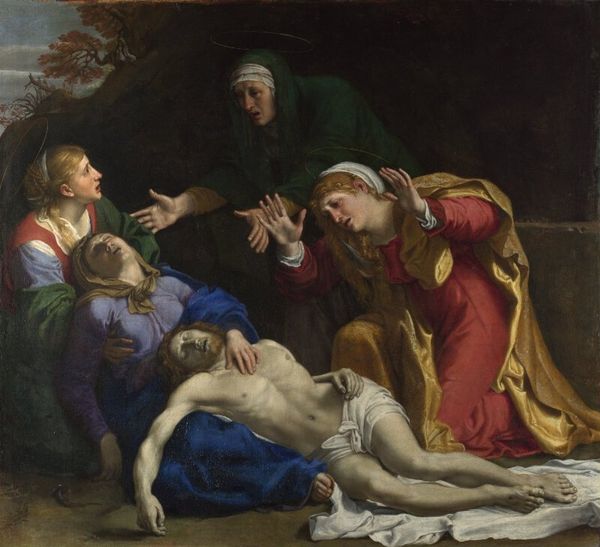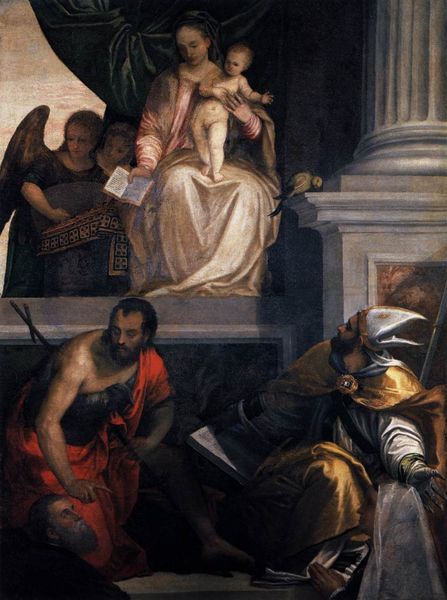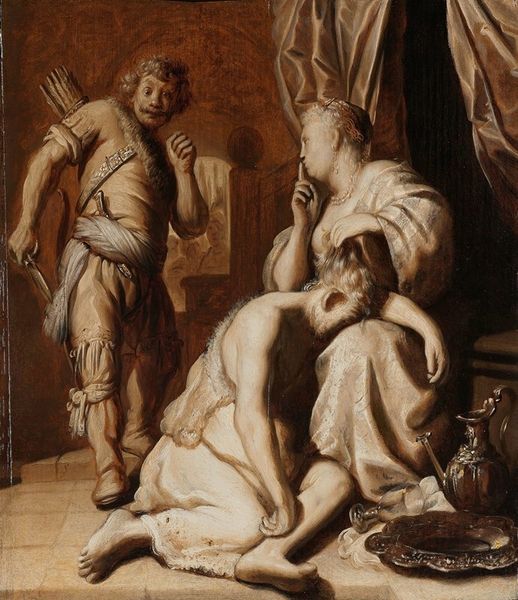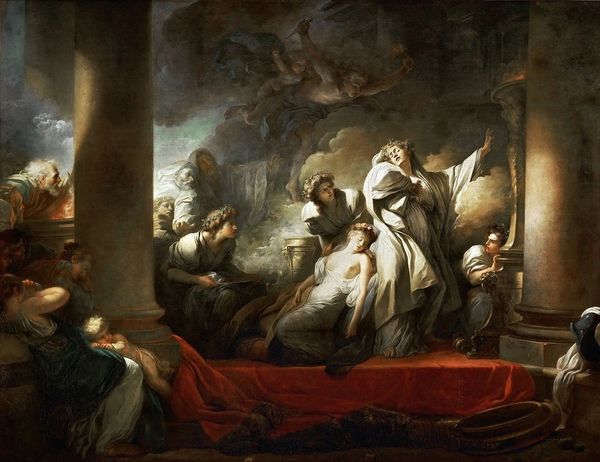
painting, oil-paint
#
portrait
#
baroque
#
painting
#
oil-paint
#
arch
#
christianity
#
history-painting
#
angel
#
christ
Dimensions: 203 x 244 cm
Copyright: Public domain
Curator: Looking at Diego Velázquez's “The Temptation of St. Thomas Aquinas,” created around 1632 and presently hanging in the Orihuela Cathedral in Spain, I’m immediately struck by how sensuous the paint handling is. The angel’s robes feel almost edible. Editor: And look at the dramatic chiaroscuro, plunging almost half the canvas into shadow! The stark contrasts must have made quite an impact in the Cathedral setting. More than mere depiction, Velazquez seems focused on the event's psychology. Curator: Indeed. The work teems with symbolism. We see the saint receiving a girdle from angels. Note the open books at his feet—symbols of the scholarship and divine wisdom he is renouncing, representing his victory over temptation. His body language expresses serenity, an emotional purity that Velazquez contrasts so brilliantly with the shadows behind. Editor: The angels' robes intrigue me. The material richness feels distinctly earthly, doesn’t it? Pink and ochre pigments rendered so luxuriously—were these imported from afar? How accessible would this quality of oil paint have been, and who might have had a hand in grinding and preparing those colors? Velázquez's brushstrokes even bring texture to those fabrics. Curator: That material grounding reinforces a fascinating aspect. The saint's humility is symbolized through a fairly direct rendering. Velazquez uses earthly beauty as the vehicle to illustrate Saint Thomas’ triumph and inner life. Editor: Even the simple elements speak volumes—a charred piece of wood, perhaps representing worldly desires now extinguished. All placed in this dimly lit chamber, where every texture and surface gains significance by its relationship to labor and the context in which it came into being. It is a kind of moral statement conveyed through matter and craft. Curator: A perfect meeting point between spirit and substance, isn't it? That’s what lingers with me: the artist showing that it takes an understanding of earthly delights to rise above them. Editor: It’s compelling to consider the act of making and how these humble ingredients served to evoke such transcendence.
Comments
No comments
Be the first to comment and join the conversation on the ultimate creative platform.
